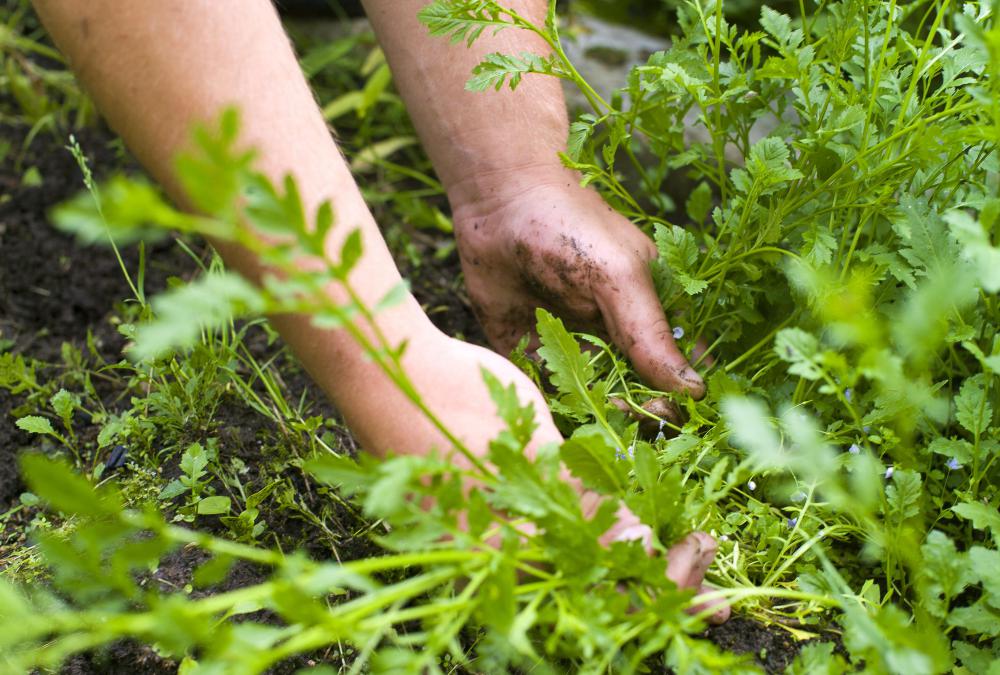At WiseGEEK, we're committed to delivering accurate, trustworthy information. Our expert-authored content is rigorously fact-checked and sourced from credible authorities. Discover how we uphold the highest standards in providing you with reliable knowledge.
What are the Best Tips for Low-Maintenance Landscaping?
Furnishing a yard does not have to be constant state of hard work and complicated upkeep. Multiple options exist for creating beautiful, presentable lawns that do not require meticulous attention. Although the specifics of low-maintenance landscaping depend on climate conditions, there are a few general guidelines to keep in mind concerning the makeup of the lawn, flowers or additional plants, and yard decorations.
Regions that receive adequate rainfall generally produce lawns made of grass. As anyone who has ever cared for a lawn knows, weekly mowing does not always feel like low-maintenance landscaping. Certain types of grass grow more slowly than others, and may be a good choice for those who tire of frequent mowing. Bahia grass, for example, is great for low-maintenance landscaping because it does not grow to great heights, and is also thick enough to slow weed development. The down side of slow-growing grasses is that they tend to turn brown if not given adequate water, which can be inconvenient in warmer, drier climates.

Landscaping in warm, dry climates often feature alternatives to grass lawns. Homes in drought-prone areas sometimes completely forgo grass, and instead have yards filled with sand or small, clean, attractive pebbles. These landscapers know that if the climate is not appropriate for certain plants, trying to maintain attractive yard work will be fighting a losing battle. Opting for sand or pebbles eliminates the need for mowing and extra irrigation in times of low rainfall.
Low-maintenance landscaping can still incorporate plant life, as long as the foliage is selected carefully. If the climate permits flowering plants, perennials, or plants that grow back year after year, are the best option. Perennials are often hardy plants that do not require much attention, and the fact that they keep coming back drastically decreases planting time. Another low-maintenance option is to plant various types of low lying shrubs. Shrubs will also return season after season, and, with the exception of some light and occasional trimming, do not require much upkeep.
Regardless of what types of plants are used, there are measures that can be taken to keep gardens looking well-kept without a large amount of work. Consider laying a weed-deterring material during planting to discourage unwanted plant life from creeping into the garden. Mulch, or wood chips, are another great way to keep weeds at bay, and also provides a finished, well-maintained look.
Certain lawn ornaments are more difficult to care for than others. Simple decorations like stone edging around a garden or driveway, decorative rocks or statues, or low-lying garden lights are excellent choices for low-maintenance landscaping. These accessories add polish to a yard but do not require much care. Elaborate decorations such as ponds or fountains that will need to be cleaned and repaired are not ideal for low-maintenance landscaping.
AS FEATURED ON:
AS FEATURED ON:











Discuss this Article
Post your comments